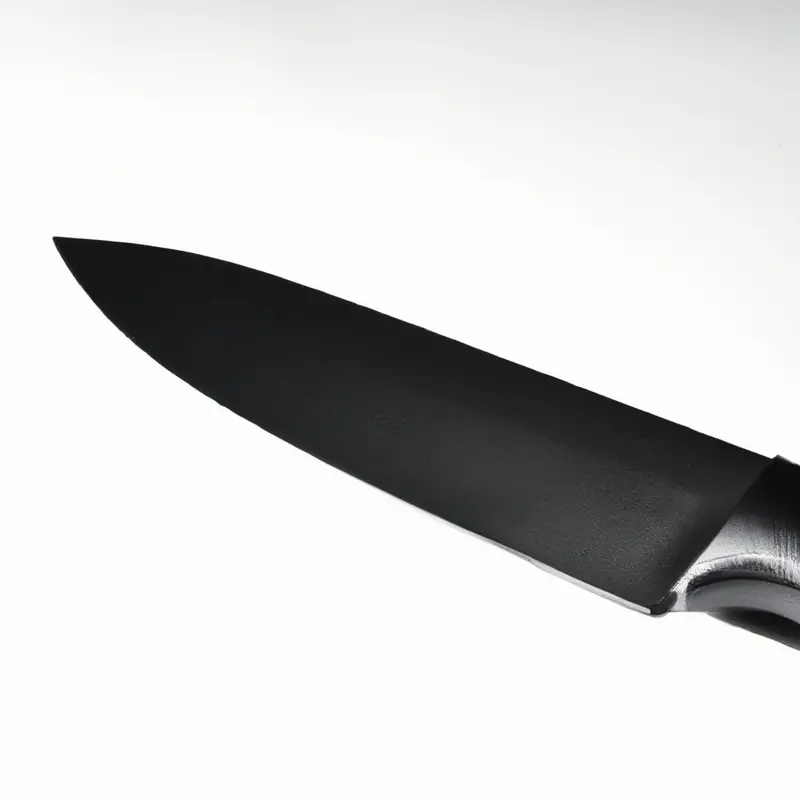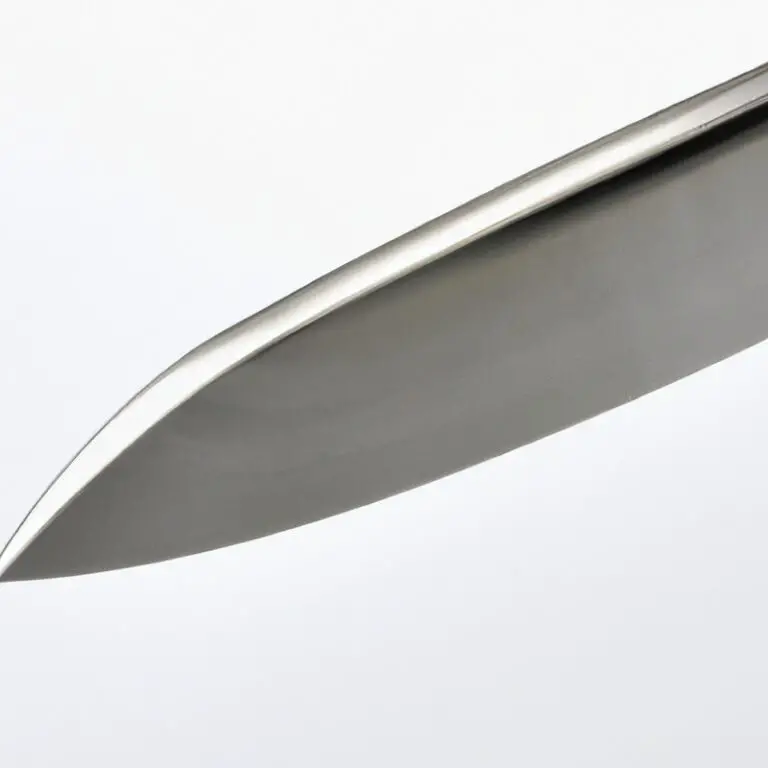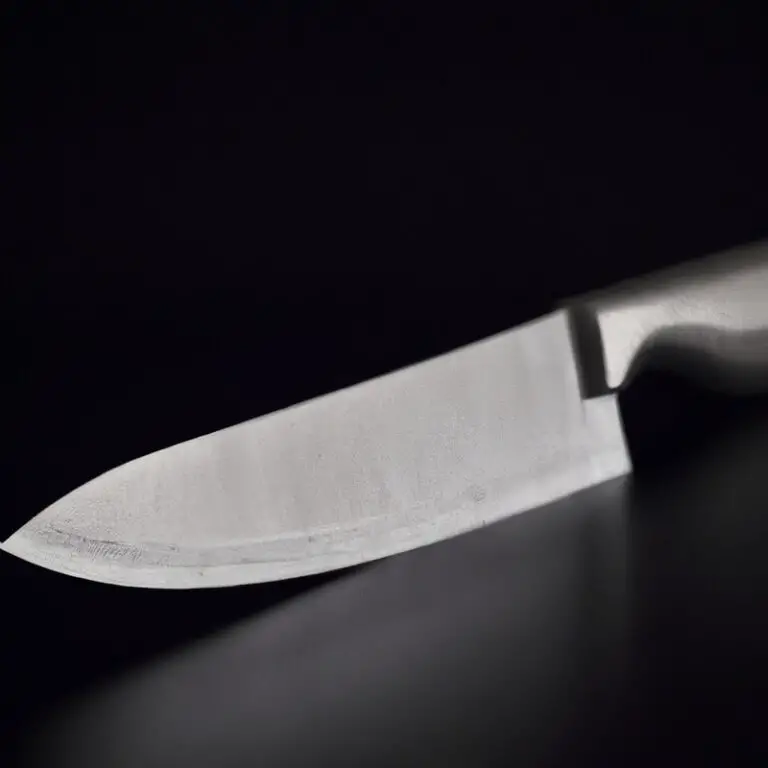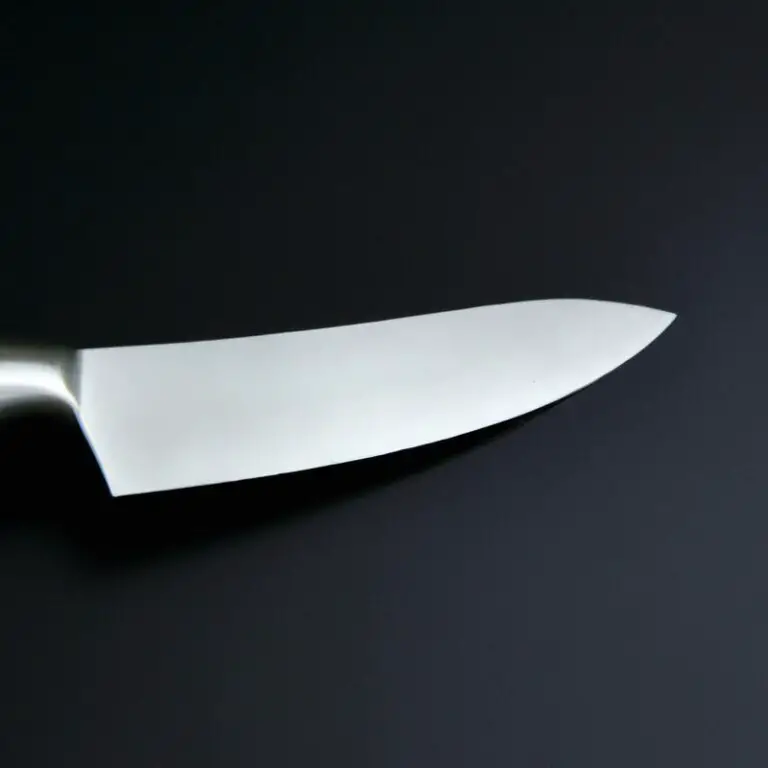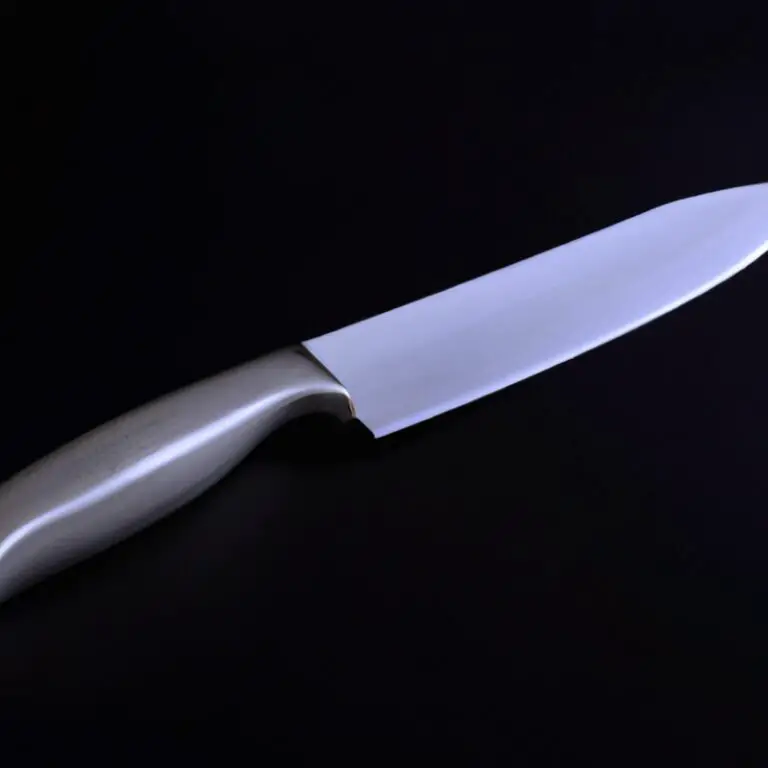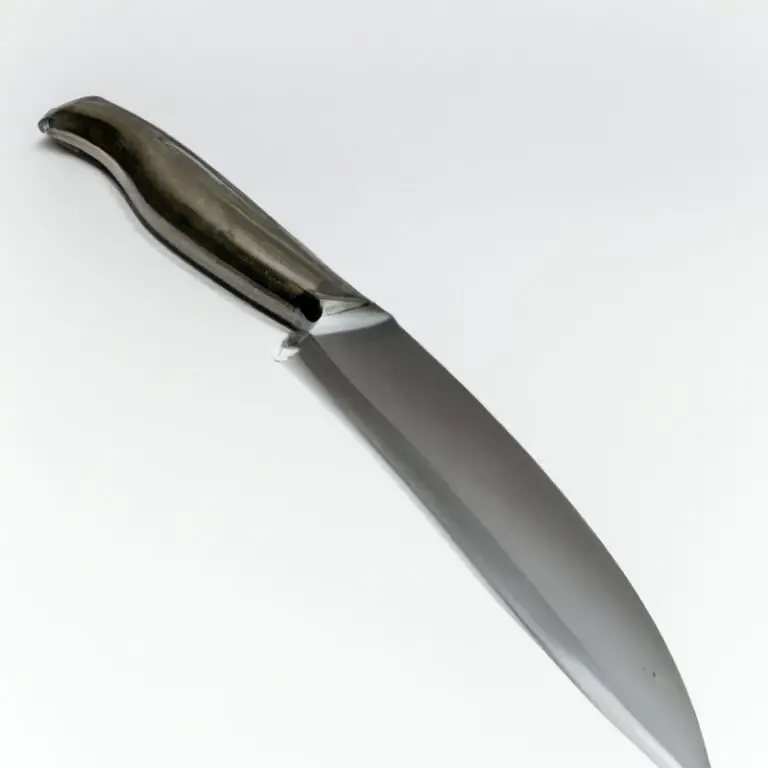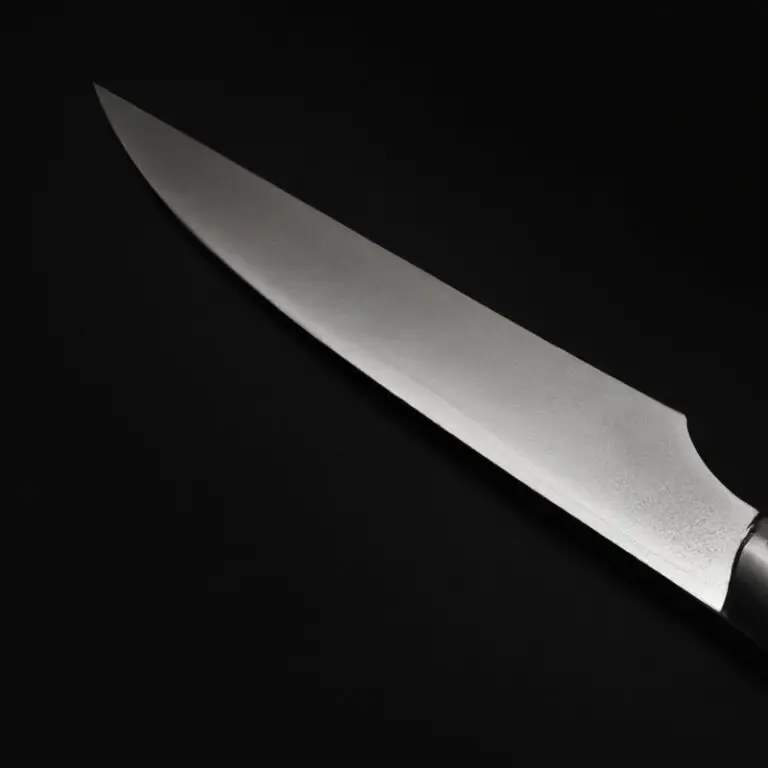How To Sharpen a Santoku Knife? Easy!
Key Takeaways:
- Proper sharpening of Santoku knives involves using a sharpening stone at the correct angle for best results.
- Honing is an essential step that helps maintain the sharpness of the Santoku knife between sharpenings.
- Regular maintenance and proper care can extend the life of the Santoku knife, ensuring its optimal performance for years to come.
- Seek professional help if the blade has become severely damaged or dulled, as improper home sharpening techniques can cause more harm than good.
If you’re someone who has spent some time in the kitchen, you must be aware of how important it is to have a sharp knife by your side. Among all the various knife types in the market, Santoku knives have gained immense popularity for their versatility and sharpness.
However, with frequent use, even they tend to lose their sharpness and become dull.
But fret not, as sharpening a Santoku knife isn’t rocket science. In this beginner’s guide to better sharpening, we’ll cover the top techniques, essential tools, and mistakes to avoid when sharpening your Santoku knife.
So, let’s get straight to the point!
Understanding the Anatomy of a Santoku Knife: A Beginner’s Guide to Better Sharpening
To sharpen a Santoku knife, it’s important to understand its anatomy. The Santoku knife is a Japanese-style knife that typically ranges in size from 5 to 8 inches and has a flat edge with a slightly curved tip.
The blade is thinner than that of a Western-style chef’s knife and has a hollow-ground edge, which allows for thinner slices.
The handle of a Santoku knife is usually made of wood or plastic, and the blade is made of high-carbon or stainless steel. It’s important to choose a sharpening method that matches the type of steel your knife is made of.
To ensure the best sharpening results, it’s important to maintain the original angle of the blade while sharpening.
The angle of a Santoku knife is typically around 15-20 degrees. Understanding the anatomy of your Santoku knife is the first step in sharpening it properly and maintaining its sharpness over time.
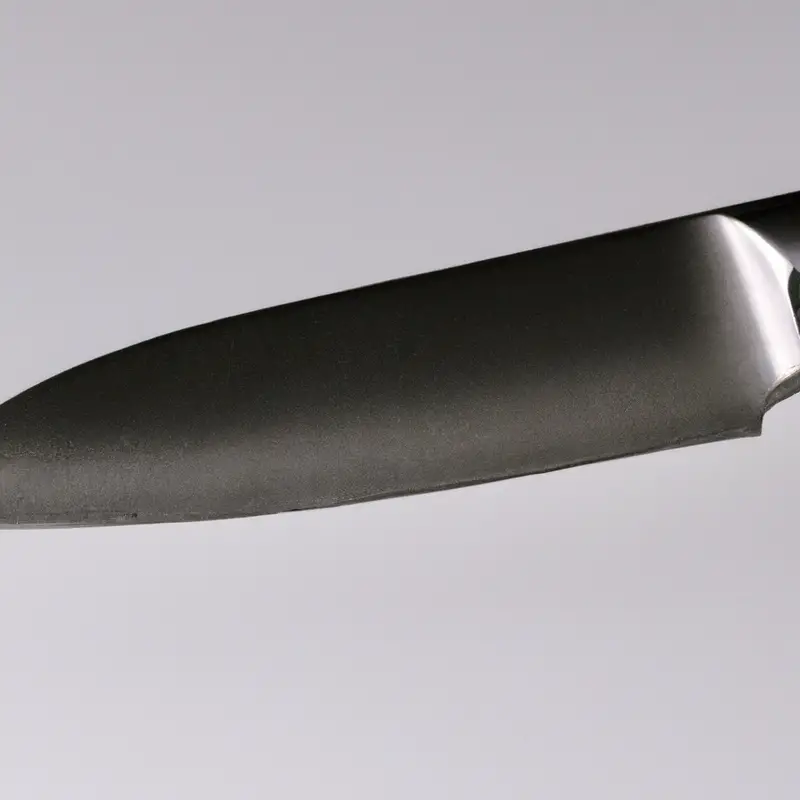
The Top Techniques for Sharpening Your Santoku Knife Like a Pro
The Top Techniques for Sharpening Your Santoku Knife Like a Pro:
- Hold the knife at a consistent angle – approximately 15-20 degrees – while sharpening.
- Use a honing rod to maintain edge sharpness between sharpenings.
- Gradually work your way through a progression of grits when using a whetstone.
- Avoid using a serrated knife sharpener or any sharpening tool that’s not specifically designed for Santoku knives.
- Consider investing in an electric sharpener for quick and efficient results.
- Always clean and dry your knife thoroughly after sharpening to prevent rust and damage.
The Essential Tools You Need to Sharpen Your Santoku Knife
The essential tools you need to sharpen your Santoku knife are a whetstone, a honing rod, and a sharpening guide. A whetstone, also known as a sharpening stone, is a block of abrasive material used to sharpen and polish the blade.
A honing rod, also called a sharpening steel, helps maintain the sharpness of the blade in between sharpening sessions.
And finally, a sharpening guide is a tool that helps you to maintain a consistent angle while sharpening the blade. These tools are critical for proper Santoku knife maintenance, and investing in high-quality versions will ensure optimal sharpening results.
Additionally, it’s essential to have a clean and debris-free surface to work on to prevent possible damage to the blade.
Therefore, a cutting board, a towel, or a piece of paper can be used to protect the work surface and keep it clean. Overall, with the right tools and a bit of practice, it’s easy to maintain your Santoku knife and achieve impressive cutting results.
Feeling Sharp: The Importance of Honing Your Santoku Knife
Honing your Santoku knife regularly is crucial to maintaining its sharpness, durability, and overall performance. Honing is the process of realigning the blade’s edge by removing any burrs or nicks that may have formed during use.
The honing rod is the most common tool used for honing knives, and it’s essential to use it correctly to avoid accidentally dulling the blade.
Honing regularly will ensure that your Santoku knife retains a razor-sharp edge, allowing you to slice through food with ease and precision. It’s recommended to hone your Santoku knife every few uses or whenever you notice the blade starting to feel dull.
By honing your Santoku knife regularly, you’ll not only improve its cutting ability but also extend its lifespan.
Perfecting Your Angle: How to Sharpen Your Santoku Knife at the Correct Angle
To sharpen your Santoku knife correctly, it is important to maintain the correct angle while sharpening. The optimal angle for a Santoku knife is around 12-15 degrees, which provides a fine edge while maintaining durability.
To sharpen your knife at the correct angle, use a honing guide or a sharpening stone with an angle guide.
Hold the knife against the guide at the appropriate angle and move it across the stone in a circular motion, alternating sides every few strokes. It is essential to maintain a consistent angle throughout the process to avoid changing the shape of the blade and reduce the risk of injury.
Check the angle frequently, and make any necessary adjustments to ensure accuracy.
After sharpening, use a honing steel to maintain the sharpness of the blade.
The Right Way to Use a Whetstone to Sharpen Your Santoku Knife
To sharpen your Santoku knife using a whetstone, follow these steps:
- Soak the whetstone in water for 10-15 minutes.
- Place the whetstone on a non-slip surface.
- Hold the knife at a 15-20 degree angle against the stone.
- Start with the coarse side of the stone, and move the knife back and forth, maintaining the angle.
- Repeat the process on the fine side of the stone.
- Test the knife’s sharpness by slicing through a piece of paper or vegetable.
Remember to maintain a consistent angle and pressure while sharpening. Avoid putting too much pressure on the knife as it can cause damage to the blade.
It’s best to practice regularly on a whetstone to improve your technique and maintain your Santoku knife’s sharpness.
Sharpening Your Santoku Knife with a Sharpening Steel: Tips and Tricks
To sharpen your Santoku knife with a sharpening steel, start by holding the steel vertically and placing the tip of the steel on a steady surface. Then, hold your knife at a 15-20 degree angle against the steel and use a sweeping motion to sharpen the knife.
Repeat this process on both sides of the knife for about 10-12 strokes per side.
Remember to use a light pressure and to maintain a consistent angle throughout the process. A helpful tip is to use a honing guide to ensure a consistent angle while sharpening.
Also, don’t forget to wipe your knife with a damp cloth after sharpening to remove any metal dust.
It’s important to note that while a sharpening steel is a helpful tool for maintaining the sharpness of your Santoku knife, it’s not a substitute for regular professional sharpening. It’s recommended to have your knife professionally sharpened once or twice a year, depending on how often you use it.
The Best Electric Knife Sharpeners for Your Santoku Knife
When it comes to sharpening your Santoku knife, electric sharpeners can be a game-changer. Here are some of the best electric knife sharpeners specifically designed for Santoku knives:
1. Chef’sChoice Trizor XV EdgeSelect Electric Knife Sharpener
This electric knife sharpener provides a three-stage sharpening and honing system that results in a razor-sharp edge for your Santoku knife. It’s designed with a flexible stropping/polishing disk for a mirror-like finish.
2. Work Sharp Culinary E5 Kitchen Knife Sharpener
Equipped with flexible abrasive belts, this electric sharpener provides a precise angle for your Santoku knife. It also boasts of a built-in vacuum system to keep your workspace clean.
3. EdgeCraft Chef’sChoice 120 Diamond Hone Hybrid Sharpener
This hybrid sharpener combines electric power and manual honing to provide your Santoku knife with a razor-sharp edge. It features diamond abrasives and flexible stropping/polishing disks for a fantastic edge.
4. Presto 08810 Professional Electric Knife Sharpener
This electric sharpener has three sharpening stages and can sharpen both straight and serrated edge blades. The Santoku sharpening guide ensures that you sharpen your Santoku knife at a precise angle.
5. Smith’s CCKS Electric Sharpener
This electric sharpener has interlocking wheel technology that allows you to sharpen your Santoku knife at the perfect angle. Its abrasive wheels are designed to provide a razor-sharp edge for your Santoku knife.
Electric knife sharpeners can go a long way in ensuring your Santoku knife is always sharp.
Invest in one of these sharpeners to keep your Santoku knife in top shape.
How Often Should You Sharpen Your Santoku Knife? A Guide to Maintaining Blade Quality
The frequency of sharpening your Santoku knife will depend on how often you use it. Ideally, you should sharpen it every 2-3 months for moderate use and every 1-2 months for heavy use.
However, you can also check if it needs sharpening by doing a simple paper or tomato test.
If the knife struggles to cut through cleanly, it’s time for a sharpening session. Remember that regular honing can also help maintain the blade’s sharpness in between sharpening sessions.
By following a consistent sharpening schedule, you can preserve your Santoku knife’s quality and prevent any mishaps in the kitchen.
Mistakes to Avoid When Sharpening Your Santoku Knife
When sharpening your Santoku knife, there are a few common mistakes you should avoid to ensure you don’t damage your beloved kitchen tool:
- Using the wrong angle: Be sure to use the correct sharpening angle for your Santoku knife. A Santoku knife typically has a 10-15 degree angle, so using a steeper angle will cause damage and a dull blade.
- Applying too much pressure: Do not apply too much pressure when sharpening your Santoku knife, as it can cause uneven sharpening and even damage the blade.
- Neglecting honing: Honing your Santoku knife is crucial for maintaining its sharpness. Be sure to hone your blade before and after each use to keep it in top condition.
- Starting with a coarse grit: Starting with a coarse grit when sharpening a dull blade can cause damage. Begin with a finer grit and work your way up to a coarser one.
- Not cleaning the blade: Be sure to clean your Santoku knife after each use and before sharpening to remove any debris that may cause uneven sharpening or damage to the blade.
By avoiding these common mistakes, you can ensure your Santoku knife remains a reliable and efficient kitchen tool for all your cooking needs.
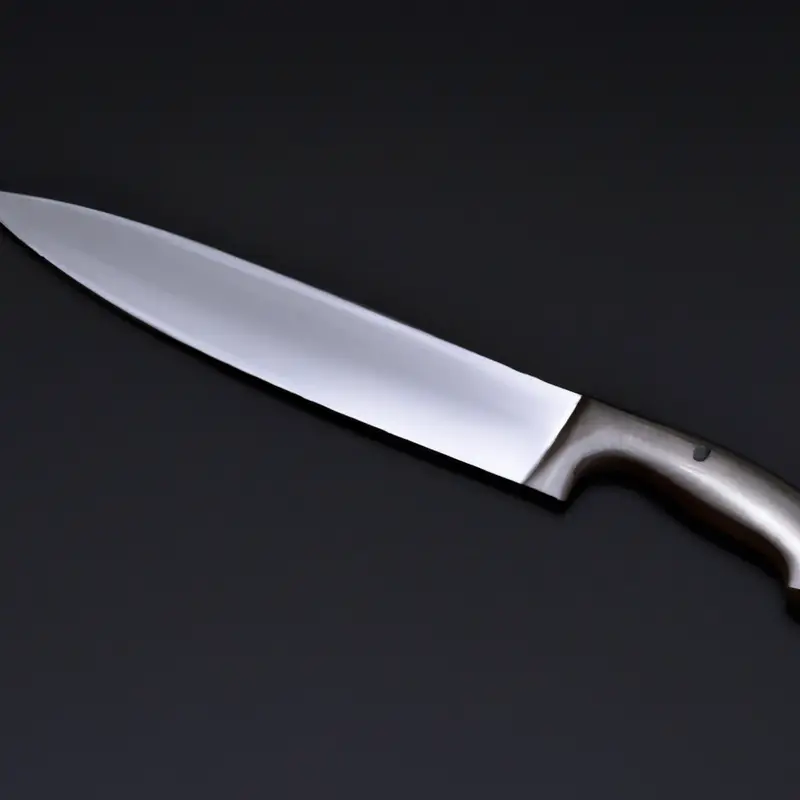
Final Verdict
Sharpening a Santoku knife requires an understanding of its anatomy, honing needs, and the right sharpening tools. By using the correct technique and angle, you can restore the sharpness of your Santoku knife and maintain its blade quality.
Remember to avoid common mistakes and regularly maintain your knife to increase its lifespan.
With the knowledge and practical tips provided in this guide, you can sharpen your Santoku knife like a pro and achieve optimal cutting results. Trust in your ability and invest in the right tools to make your experience more enjoyable and efficient.
Sharpening a Santoku knife is an art that takes time and patience, but once mastered, your knife will become a valuable asset in your kitchen.

